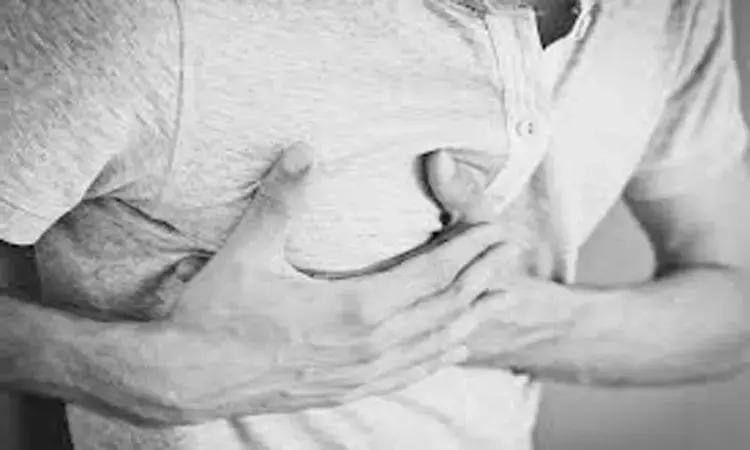- Home
- Medical news & Guidelines
- Anesthesiology
- Cardiology and CTVS
- Critical Care
- Dentistry
- Dermatology
- Diabetes and Endocrinology
- ENT
- Gastroenterology
- Medicine
- Nephrology
- Neurology
- Obstretics-Gynaecology
- Oncology
- Ophthalmology
- Orthopaedics
- Pediatrics-Neonatology
- Psychiatry
- Pulmonology
- Radiology
- Surgery
- Urology
- Laboratory Medicine
- Diet
- Nursing
- Paramedical
- Physiotherapy
- Health news
- Fact Check
- Bone Health Fact Check
- Brain Health Fact Check
- Cancer Related Fact Check
- Child Care Fact Check
- Dental and oral health fact check
- Diabetes and metabolic health fact check
- Diet and Nutrition Fact Check
- Eye and ENT Care Fact Check
- Fitness fact check
- Gut health fact check
- Heart health fact check
- Kidney health fact check
- Medical education fact check
- Men's health fact check
- Respiratory fact check
- Skin and hair care fact check
- Vaccine and Immunization fact check
- Women's health fact check
- AYUSH
- State News
- Andaman and Nicobar Islands
- Andhra Pradesh
- Arunachal Pradesh
- Assam
- Bihar
- Chandigarh
- Chattisgarh
- Dadra and Nagar Haveli
- Daman and Diu
- Delhi
- Goa
- Gujarat
- Haryana
- Himachal Pradesh
- Jammu & Kashmir
- Jharkhand
- Karnataka
- Kerala
- Ladakh
- Lakshadweep
- Madhya Pradesh
- Maharashtra
- Manipur
- Meghalaya
- Mizoram
- Nagaland
- Odisha
- Puducherry
- Punjab
- Rajasthan
- Sikkim
- Tamil Nadu
- Telangana
- Tripura
- Uttar Pradesh
- Uttrakhand
- West Bengal
- Medical Education
- Industry
CCTA should be first strategy for management and diagnosis of stable angina: RESCUE Trial

USA: The use of CCTA or SPECT for directing patients with stable angina to optimal medical therapy alone or optimal medical therapy with revascularization yielded similar outcomes, finds a recent study. However, according to the study published in the Journal of the American Heart Association, CCTA was a better predictor of revascularization and MACE.
"This trial provides further evidence in support of a coronary computed tomographic angiography (CCTA) first strategy for the diagnosis and management of patents presenting with symptoms of stable angina," wrote the authors.
Arthur E. Stillman, Emory University, Atlanta GA, and colleagues performed The RESCUE (Randomized Evaluation of Patients with Stable Angina Comparing Utilization of Noninvasive Examinations) trial -- a randomized, controlled, multicenter, comparative efficacy outcomes trial. The trial was designed to assess whether initial testing with coronary computed tomographic angiography (CCTA) is noninferior to single photon emission computed tomography (SPECT) myocardial perfusion imaging in directing patients with stable angina to optimal medical therapy alone or optimal medical therapy with revascularization.
The end point of the trial was first major adverse cardiovascular event (MACE) (cardiac death or myocardial infarction), or revascularization. The trial included One thousand fifty participants from 44 sites. They were randomized to receive either CCTA (n=518) or SPECT (n=532) and followed for a mean duration was 16.2 months. Noninferiority margin for CCTA was set a priori as a hazard ratio (HR) of 1.3.
Key findings of the study include:
- There were no cardiac‐related deaths.
- In patients with a negative CCTA there was 1 acute myocardial infarction; in patients with a negative SPECT examination there were 2 acute myocardial infarctions; and for positive CCTA and SPECT, 1 acute myocardial infarction each.
- Participants in the CCTA arm had a similar rate of MACE or revascularization compared with those in the SPECT myocardial perfusion imaging arm, (HR, 1.03).
- CCTA segment involvement by a stenosis of ≥50% diameter was a better predictor of MACE and revascularization at 1 year than the percent reversible defect size by SPECT myocardial perfusion imaging.
- Four (1.2%) patients with negative CCTA compared with 14 (3.2%) with negative SPECT had MACE or revascularization.
"There was no difference in outcomes of patients who had stable angina and who underwent CCTA in comparison to SPECT as the first imaging test directing them to optimal medical therapy alone or with revascularization," wrote the authors.
"Coronary Computed Tomography Angiography Compared With Single Photon Emission Computed Tomography Myocardial Perfusion Imaging as a Guide to Optimal Medical Therapy in Patients Presenting With Stable Angina: The RESCUE Trial," is published in the Journal of the American Heart Association.
DOI: https://www.ahajournals.org/doi/10.1161/JAHA.120.017993
Dr Kamal Kant Kohli-MBBS, DTCD- a chest specialist with more than 30 years of practice and a flair for writing clinical articles, Dr Kamal Kant Kohli joined Medical Dialogues as a Chief Editor of Medical News. Besides writing articles, as an editor, he proofreads and verifies all the medical content published on Medical Dialogues including those coming from journals, studies,medical conferences,guidelines etc. Email: drkohli@medicaldialogues.in. Contact no. 011-43720751


